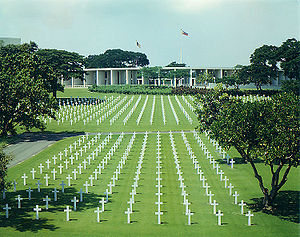
USS Fletcher (DD/DDE-445), named for Admiral Frank Friday Fletcher, was the lead Fletcher-class destroyer, and served in the Pacific during World War II. She received fifteen battle stars for World War II service, and five for Korean War service.

The Asiatic–Pacific Campaign Medal is a United States military award of the Second World War, which was awarded to any member of the United States Armed Forces who served in the Asiatic-Pacific Theater from 1941 to 1945. The medal was created on November 6, 1942, by Executive Order 9265 issued by President Franklin D. Roosevelt. The medal was designed by Thomas Hudson Jones; the reverse side was designed by Adolph Alexander Weinman which is the same design as used on the reverse of the American Campaign Medal and European-African-Middle Eastern Campaign Medal.
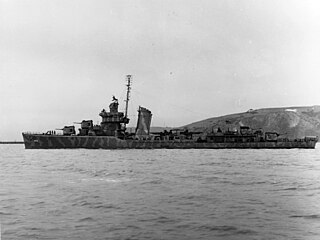
USS Hughes (DD-410) was a World War II-era Sims-class destroyer in the service of the United States Navy.
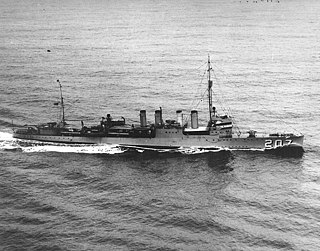
USS Southard (DD-207/DMS-10) was a Clemson-class destroyer in the United States Navy during World War II. She was the second Navy ship named for Secretary of the Navy Samuel L. Southard (1787–1842).

USS Stevens (DD-479) was a Fletcher-class destroyer in service with the United States Navy from 1943 to 1946. She was finally sold for scrap in 1973.

The fourth USS Preble (DD-345/DM-20/AG-99) was a United States Navy Clemson-class destroyerin commission from 1920 to 1945. She served in China, including on the Yangtze Patrol, and later saw combat in World War II as a minelayer. She was named for Commodore Edward Preble.

USS Fuller (AP-14/APA-7) was a Heywood-class attack transport in service with the United States Navy from 1941 to 1946. She was scrapped in 1957.

USS Loy (DE-160/APD-56), a Buckley-class destroyer escort in service with the United States Navy from 1943 to 1947. She was converted to high-speed transport (APD) in late 1945. Following her decommissioning, she spent another 19 years in reserve before being sold for scrap in 1966.
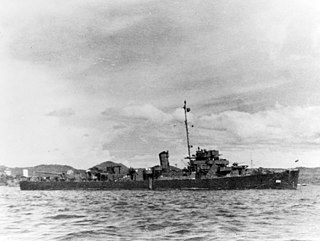
USS James E. Craig (DE-201) was a Buckley-class destroyer escort in service with the United States Navy from 1943 to 1946. She was sunk as a target in 1969.
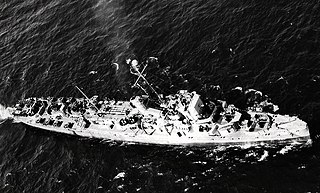
USS Cofer (DE-208/APD-62) was a Buckley-class destroyer escort in service with the United States Navy from 1944 to 1946. She was scrapped in 1968.

Private First Class Charles Howard Roan was a United States Marine who sacrificed his life to save those of four fellow Marines in the landing on Peleliu during World War II. For his heroism, he posthumously received his nation's highest military honor – the Medal of Honor.

The Pacific Ocean theater of World War II was a major theater of the Pacific War, the war between the Allies and the Empire of Japan. It was defined by the Allied powers' Pacific Ocean Area command, which included most of the Pacific Ocean and its islands, while mainland Asia was excluded, as were the Philippines, the Dutch East Indies, Borneo, Australia, most of the Territory of New Guinea, and the western part of the Solomon Islands.
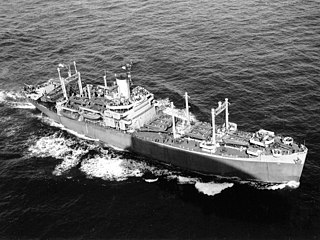
USS DuPage (AP-86/APA-41) was a Bayfield-class attack transport in service with the United States Navy from 1943 to 1946. She was then sold into commercial service and was scrapped in 1973.

USS Barnstable (APA-93) was a Bayfield-class attack transport in service with the United States Navy from 1944 to 1946. She was sold to commercial service in 1948 and finally scrapped in 1974.

USS Elmore (APA-42) was a Bayfield-class attack transport in service with the United States Navy from 1943 to 1946. She was then sold into commercial service and was scrapped in 1971.

USS Leedstown (APA-56) was a Windsor-class attack transport that served with the United States Navy from 1943 to 1946. She was subsequently sold into commercial service and was scrapped in 1970.

USS McNulty (DE-581) was a Rudderow-class destroyer escort in the United States Navy during World War II.

The USS PC-598 was a 173ft metal hulled PC-461-class submarine chaser in the United States Navy. The submarine chaser fought in the Pacific Theatre during World War II, and was converted to an amphibious landing control vessel during the war, reclassified as a Patrol Craft-Control (PCC). It participated in six amphibious invasions as a control vessel during the war.
VPB-54 was a Patrol Bombing Squadron of the U.S. Navy. The squadron was established as Patrol Squadron 54 (VP-54) on 15 November 1942, redesignated Patrol Bombing Squadron 54 (VPB-54) on 1 October 1944 and disestablished on 7 April 1945.

USS LST-24 was a United States Navy LST-1-class tank landing ship used exclusively in the Asiatic-Pacific Theater during World War II and manned by a United States Coast Guard crew. Like many of her class, she was not named and is properly referred to by her hull designation.
